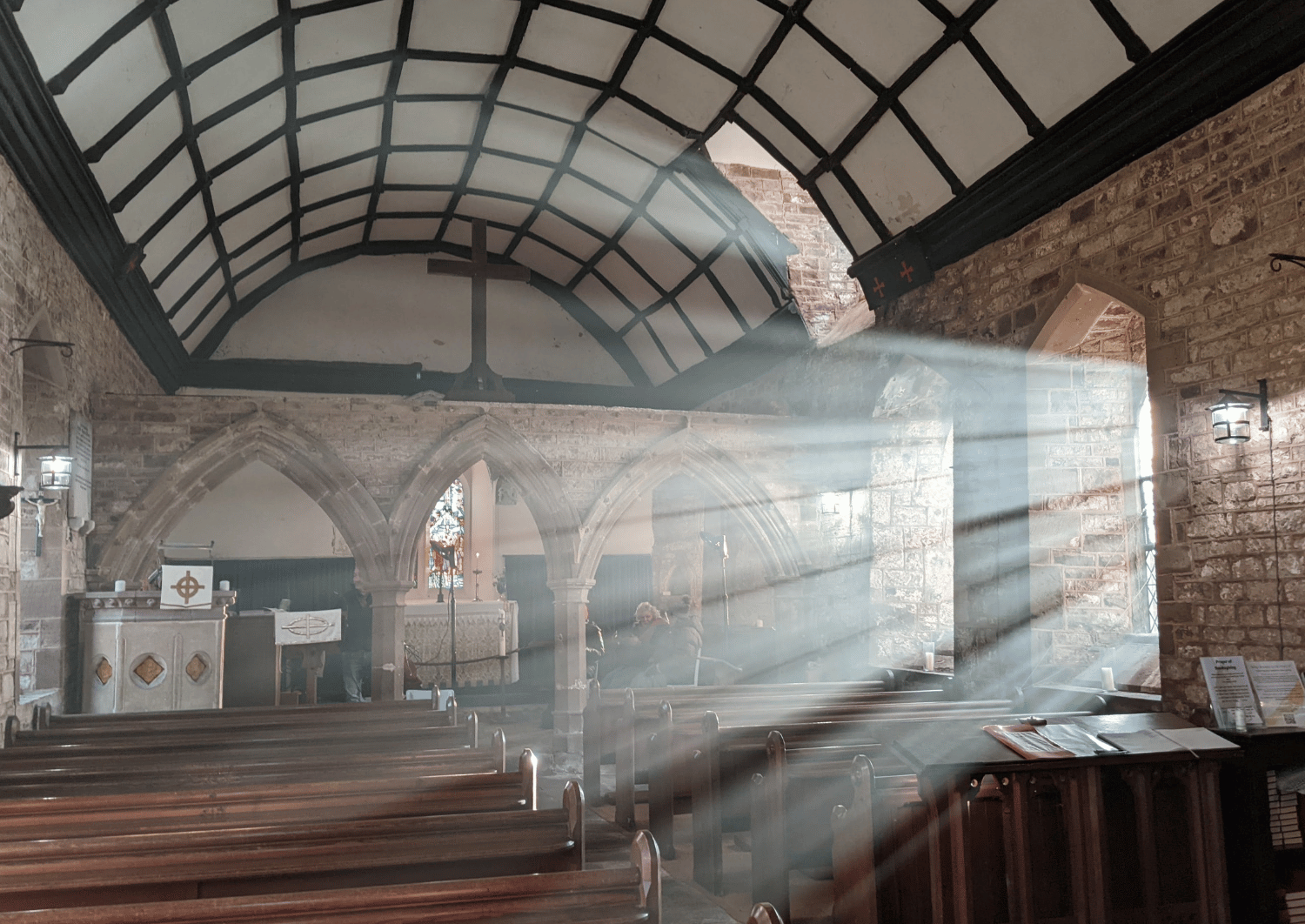
In a small Norman church on the Welsh border, a group of committed Christians has been reexploring prayer as part of the diocese’s Year of Prayer. The church of St Mary the Virgin in Welsh Newton is a beautiful building in a rural setting. It has been a place of worship for over 800 years, marking the seasons and the passing trends in Christianity. It stands witness to many generations of worshippers who have sought a deeper spiritual connection with the Almighty.
The recent experience of this community offers insight into the changes that happen when we connect our lives with prayer.
Matthew, one of the churchwardens explains: “The change has been subtle, but profound. Prayer is helping us to thread faith through every aspect of life . We are a Christian community, small [at present], which likes to have our vicar present to conduct services (we have communion twice a month) but doesn't always require it. On the other two Sundays we meet, pray, talk and study over breakfast at the back of the church and have a deeply rewarding experience outside a conventional liturgy.”
Before the year of prayer began, the church had already started a WhatsApp group which they use to stay in touch and share prayer requests. These come from members of the group, from the church’s website and from the prayer box at the back of the church. When prayer was offered on the church website - and thanks no doubt to Google - requests filtered in from across the world.
Patricia, a member of the PCC adds: “The year started in a promising fashion with a record 11 people turning up for our Christian meditation at 8.30am on New Year's Day.”
During Holy Week, a 24 hour prayer vigil saw the church filled with prayer around the clock. The event also drew in a number of people from other churches and denomnations. Following this, an additional (fifth) service was added in the evening of the fourth Sunday dedicated to prayer. Patricia adds: “There has been a greater commitment to prayer from people who were before only casually or occasionally involved and the prayer vigil during Holy Week was really beautiful. It created a sense of excitement and prompted a lot of searching conversations about the nature of prayer and different types and styles of prayer.”
Matthew explains: “We are also increasingly bringing prayer for individuals and situations into our formal services. The presiding clergy ask who we would like to pray for in the service, we tell them and we all join in the prayers. This feels to me, at least, far more 'active' and involving and adds another dimension.
It feels that the faith of this small church group is becoming more solid and robust. Ultimately, I feel it is helping build more confident Christians as it involves us all individually and profoundly.
The experience of focusing on prayer and Bible study is helping to make the group understand their faith more deeply and practise it not just a few times a month but every day. The prayer group has specifically proved a lifeline for several members dealing with recent bereavements and with the strain of caring for elderly and sick relations.”
The group has come to feel that this commitment to prayer together is creating a solid foundation on which to build out the church’s ministry. Matthew concludes: “You can’t have a church without knowledgeable and confident Christians and with clergy thinly spread, the onus is squarely on us to study and practise our faith. We now a have a core group with solid and increasing Biblical knowledge who can explain and defend the Gospel and who are unselfconsciously able to pray aloud for and with others. As a result, when new people come, we are welcoming them not just to the odd service followed by a polite chat, but into a community, an active faith and a local support network. Beautiful as the building is, the church is us and those we bring to join us.”
Typically, when meeting without clergy, the group sits in silent meditation for twenty minutes, then gathers for breakfast, following which they will read and discuss one or two Bible passages (taken from the lectionary). Then they move into open prayer – anyone present is free to pray for whatever they would like – before closing with the Lord’s Prayer.
For churches across the diocese who might be seeking a refreshed approach to prayer, there are lots of resources and inspiring prayer ideas to be found on our website. You can also find all the details of the Year of Prayer events being hosted centrally to inspire and encourage prayer.